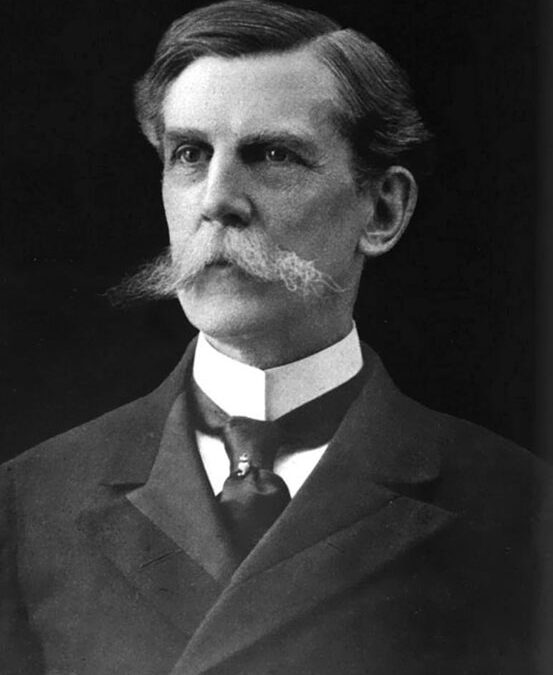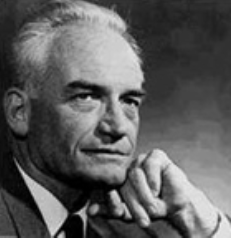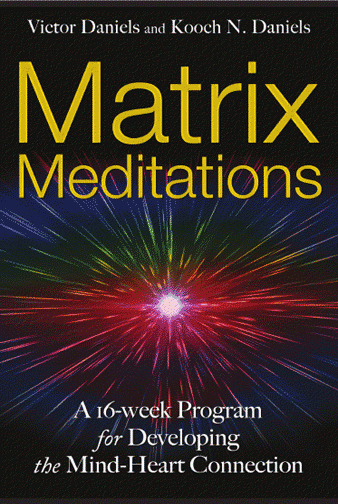
Cultures, Politics
A few thoughts on the Supreme Court.
One of the issues in this year’s presidential elections is the appointment of new Supreme Court judges. Long ago Plato wrote, “Justice in the life and conduct of the State is possible only as it firs resides in the hearts and souls of the citizens.
That’s an admirable ideal. It is also often violated. French poet, journalist, and novelist Anatole France said, “Justice is the means by which established injustices are sanctioned.” In a similar spirit, U.S. Supreme Court Justice Oliver Wendell Holmes once told a young man who had a case before the court, “This is a court of law, young man, not a court of justice.”
But justice is possible at all only if the Justices aspire to it. Article III, Section I of the U.S. Constitution declares, “The Judges, both of the supreme and inferior courts, shall hold their Offices during good behavior.” “Good behavior” must surely include fairness. Fairness must surely include removing oneself from being a judge in cases where the judge owes something to one of the parties in a case before him. Two recent and present justices have violated this principle. Justices Antonin Scalia and Clarence Thomas have both refused to recuse themselves from cases in which they or their spouses had received substantial sums, primarily in cases that involved the promotion and defense of extreme right wing ideology.
This is odd for two reasons: One, their personal gain from imposing their ideological biases on the country; Two, because the Supreme Court was not meant to “legislate from the bench.” It gave itself that power when John Marshall was the first Supreme Court justice, with no checks or controls on its opinions, and Thomas Jefferson declared himself horrified by this action and precedent.
Failure to recuse in a case that involves a supreme court justice’s conflict of interest must certainly be termed “bad behavior.” The Constitution specifies that a Justice shall hold office “during good behavior,” but unfortunately does not specify a mechanism for removing a judge who engages in bad behavior. And in the country’s entire history, no Supreme Court judge has ever been impeached or otherwise removed for bad behavior.
Therefore it seems clear that a brief Constitutional Amendment is needed that clearly specifies the conditions under which a Justice shall be removed and exactly how he or she shall be removed — and what constitutes an acceptable defense against such removal. With such a provision, Alito and Thomas would both have been off the court long ago.
Furthermore, consider the contradiction between right wing extremists’ screams that the Court should not “legislate from the bench” and their calls for the appointment of a justice to replace Scalia who is at least as ultra right-wing as Scalia himself. That’s not a call for impartial justice, but rather exactly a call for legislation from the bench in accord with their own agenda.
Finally, there is the pathetic disgrace of the Republican majority in the U.S. Senate refusing to engage in confirmation hearings for the President’s nominee to replace Scalia. This complete dereliction of their constitutional duty is unprecedented in the entire history of the United States. There ought to be a provision for the removal from his responsibilities of any Senate leader who acts in such a disreputable manner. When there is more than enough work for nine justices, and one of the eight who remain is checked out much of the time (Thomas), then it is absolutely incumbent on the Senate to put confirm someone in his place. I advocate a provision that if the Senate has failed to act after a specified time, the President’s nominee will automatically assume the position.
For more detailed thoughts about the judiciary and Supreme Court, see “Justice for Whom — Down the River of No Return?” in The Radical Wrong: Lies Our Founding Fathers Never Told Us (online booksellers — e-book or hardcopy)

Buy on Amazon

Meditation, Psychology, Spirit
TWO-MINUTE MEDITATION. (YES, REALLY!)
This is for you if you’ve heard that meditation can have positive effects but just haven’t brought yourself to spend the 15 or 20 minutes a day required for a minimal regular meditation session.
This mini-meditation is useful when you:
1. . . .feel stressed-out
2. . . .are emotionally upset and want to calm down. Any kind of emotional upset –sad, angry, jealous, aggressive, etc. — choose your state of mind and body.
3. . . .would like to feel just a little more centered and focused before you set out
on your day. . . or go into an important meeting . . . or would like to feel more
focused or present before -whatever.
4. . . . know it would be best to keep your mouth shut but have a hard time stopping yourself from saying something that will cause trouble for you or make someone feel bad.
5. . . . would like a tiny tast of meditation to see whether you’re willing to put a bit more time into it.
6. . . .are waiting for somebody or something and have nothing else to do
7. . . . feel bored but you forgot your smartphone or ipad or it has run out of juice
and you want something — anything– to do.
8. . . . “just feel like it — no special reason.”
Okay, let’s go. Just two minutes. Enjoy!
Whether you’re sitting or standing, begin by centering yourself as completely as you can in relation to gravity. Lean slightly forward, backward, left, and right, and find the place where if you were a pendulum you’d come to a stop, You can do that in about 20 seconds. Already you’ve begun your meditation!
Then inhale deeply through your nose and silently count “1” on your incoming breath as you inhale. Sense your breath coming in through your nose and going down into your lungs. At the same time, hold your hands so that the thumb and first or second finger of each hand are close together — just about an eighth of an inch apart.
Next exhale (preferably through your mouth) and to the best of your ability let everything that was in your mind “flow out” on your exhalation. As you do, continue to sense your breath, going out now, and at the same time scan your body for any muscle tension or tightness and let go of it as much as you can while you are exhaling. Also, as you exhale close that eighth of an inch gap between each of your thumbs and fingers so that each thumb and finger just touch. This is a “moving mudra.” You’ve now seriously begun your two minute medidtation.
Now, simply repeat what is described in the two paragraphs just above, but this time silently count “2” as you inhale. Do everything else just as above.
Then repeat what you just did for eight more breaths. On the third breath count “3” as you inhale, on the fourth breath count “4,” and so on up to 10. After the tenth breath you’re finished. Then look around, listen, and be as present as you can with your more relaxed body and your immediate surroundings and less caught up in your mind. Yep, you can do this in two minutes.
Of course, if you feel like it, you’re likely to deepen your meditation if you do another sequence of ten breaths, and as many more as you like until you’re ready to stop. But not more than ten. If at some point you want to get a little deeper into meditation, look at the other blog posts here. And if you’d like to get into it in a more deeply enriching way, you’ll find this book or e-book just plain amazing. It might even become your lifelong friend. (If you want to check out samples, go online to the address just below.
Learn more: Matrix Meditations

Cultures, Economics, Politics
WARNING:Mind-Exploding Outrage (that is, the Trans Pacific Partnership) Ahead,” writes the Hightower Lowdown. “Unbeknownst to most people, a cabal of corporate and political elites (including Presidents Clinton, Bush II, and Obama has stealthily negotiated international trade deals during the past two-plus decades that have fabricated, piece by piece, what now amounts to a privatized world government. It’s a secretive, autocratic, plutocratic, bureaucratic government of, by, and for the multinational corporations.” Its 29 huge chapters include “rules limiting what our domestic governments are permitted to do, plus new rights and privileges for corporations enforced through supranational closed-door tribunals. This adds up to a privately gated ‘government.’”
Wolves in sheep’s clothing? For a long time some folks have been worrying about a “world government.” Well, its closing in on us. And it’s a corpocracy. Obama is also promoting a Trans Atlantic Trade and Investment Partnership (TTIP) with the European Union.
But the TPP is closer. Negotiations have been going on since 2005. It’s almost done. And who wrote it? CEO’s of giant multinational corporations, and their lawyers and lobbyists, in secret, behind closed doors. These include Halliburton, Chevron, PHRA, Comcast, and other such companies you know and love. Congress is being intentionally kept in the dark about what the TPP document says. U.S. Senator Ron Wyden says, “More than two months after receiving the proper security credentials, my staff is still banned from viewing the details of the proposals that USTR is advancing. Economist Robert Reith states, “It is incomprehensible that the leaders of major corporate interests who stand to gain enormous financial benefits . . . are actively involved in the writing of the TPP while at the same time, the elected officials of this country. . have little or no knowledge as to what is in it.”
Shhhh!—the remarkable media blackout
There is an almost complete news blackout about the negotiations. I did find one 2013 article in the Washington Post. Otherwise, silence, Almost everyone I mention it to says, “The TPP—what’s that?” It would change our society forever—but almost no one has even heard of it, despite great daily coverage of such events as a cat rescued from a telephone pole. But then, who owns the media? Maybe some of the folks who are writing the agreement—but that’s not for you and me to know.
What are the benefits—and what aren’t?
All of the above is presented to “We, the People” as a Very Good Thing. The Office of the U.S. Trade Representative touts the TPP as a step “to enhance trade and investment among the TPP partner countries, to promote innovation, economic growth and development, and to support the creation and retention of jobs.” Doesn’t that resemble a replay of NAFTA, of which there have been far more complaints than kudos? Just a for instance—all those new jobs it promised—well, just as many old jobs have dematerialized as the new ones that materialized. Perhaps President Obama has not seen the figures that show that the income gap between the rich and the rest of us has widened since he took office. Not his doing, but reality nonetheless. Economists who have seen leaked drafts of TPP chapters say it would accelerate that trend. Economic growth, yes. But for whom? It would supercharge the growing gap between the great corporations and the very wealthy on one hand and working people and the poor. And between the nastiest of the Great Corporations and their competitors. For instance, in the U.S. Big Coal and Big Oil have already gotten penalties enacted to make biosolar energy less competitive. Some solar panel manufacturers are going broke, Almost everywhere the interests of giant corporations and those of ordinary citizens conflict, the megacorporations manage to slap The People and their smaller business competitors down (despite all those pretty ads you see on TV).
A short list of what’s wrong with the TPP proposal.
- Protections against toxins and other unhealthy ingredients in food are weakened.
- Laws requiring “country of origin” labeling on many foods vanish.
- Freedom of speech is reduced, such as a company putting “Not GMO” on its labels.
- Safety laws can be invalidated.
- A law to protect people or the environment can be struck down, in the Lowdown’s words, simply if it shows that “the expected future profits” of corporate investors might be lower.
- States or countries with environmental or health standards higher than the TPPs can be sued for lost “expected future profits.”
- Present laws to favor local businesses are weakened or vanish. A company can sue a town that wants to keep its local character instead of getting overrun by big chain stores
- The approval process for generic drugs is slowed down.
- Some drugs will be delayed for years, such as one to fight cancer
- It makes it easier for big multinational corporations to swallow up smallr local corporations and companies worldwide.
- S., state and local governments could not have “buy equipment made in USA” when possible policies. The same thing goes for other countries.
- The document is being written in secret behind locked doors.
- Corporate challenges to laws protecting people or the environment are decided by secret tribunals with almost nothing to prevent conflicts of interest.
- A decision by such a tribunal is FINAL, with no appeal possible
- The conflict of interest is blatant. It is being written by those who stand to gain from it.
- All aspects of its negotiation, adoption, and implementation are designed to prevent citizen participation.
- It is written in obtuse, complicated language that appears designed to confuse.
The Devil in Disguise: Fast Track
Only one U.S. Congressman, Colorado Republican Hank Brown, read the full text of the 1994 GATT agreement. He had previously favored the agreement, but changed his mind after reading it. He didn’t have much time to read it. In 1974 President “Tricky Dick” Nixon devised a uniquely undemocratic ploy to bypass congressional consultation, one that appears unconstitutional to me, and conned congress into buying it. The U.S. Constitution charges congress with giving advice and consent on trade agreements. It says,
[The President] shall have power, by and with the Advice and Consent of the Senate, to make Treaties, provided two thirds of the senators present concur.
Fast Track requires congress to act on legislation sent to it by the White House with a simple “yes” or “no” response, and no chance to offer any amendments, It never goes to congressional committees. It must be voted on within 90 days, with minimal debate. To me that doesn’t look much like the “Advice of the Senate” required by the Constitution. The Constitution also says,
All treaties made, or which shall be made, under the authority of the United States, shall be the supreme law of the land; and the judges in every state shall be bound thereby, anything in the constitution of laws of any state to the contrary notwithstanding. (Article VI, Clause II)
Secretary of State John Foster Dulles reinforced that point: “Treaties make international law and also they make domestic law. Under our constitution, treaties become the supreme law of the land.
President Bush the First lobbied heavily to renew Fast Track, which had expired. With its assistance, President Clinton managed to get NAFTA approved. It expired in 2007. Now Obama is asking congress to resurrect it for the TPP deliberations. In other words, congress would vote for or against whatever the corporate lobbyists put into the Treaty.
Trade is not an end in itself but a means to other ends. To declare that completely unrestricted trade is appropriate everywhere, in all circumstances, is like saying, “Penicillin is a great drug, so lets use it to cure everything.” France knows all this. It has “stubbornly” refused to lower certain tariff barriers that protect its farmers, because its farms don’t just provide food, but they’re part of the whole structure of French society.
The Lowdown goes one step farther. It says, “This is not a decision about trade—the TPP represents a tectonic shift in public policy that would radically alter the fundamental structure of our society and thrust a global corporate plutocracy on us. Shouldn’t we have something to say about that?
It looks to me like leaked sections of the agreement show that the god its drafters worship above all others is to gain the maximum possible profits for their corporations. Period. That attitude takes us along a path likely to end in a world where any form of democracy can exist. With the multinationals calling the shots, I do not imagine that the proposed treaty would be more advantageous for the smaller, poorer countries that would be part of it than for the U.S., and typically much less so.
“There are always politicians and technocrats ready to show that the invasion of ‘industrializing’ foreign capital benefits the area invaded. In this version, the new-model imperialism comes on a genuinely civilizing mission, is a blessing to the dominated countries, and the true-love declarations by the dominant power of the moment are its real intentions. Guilty consciences are thus relieved of the need for alibis, for no one is guilty: today imperialism radiates technology and progress, and even the use of this old, unpleasant word to define it is in bad taste.” Eduardo Galeano, Uruguayan journalist and author.
Instead of Fast Track, I suggest a SLOW TRACK procedure in which the entire draft that is to be submitted to congress must be posted on both White House and all Congressional websites so that every interested citizen can read it and communicate concerns and suggestions to his or her congresspersons. Perhaps it could be put up at the rate of 50 pages a week, giving people time to digest it—and perhaps meet and discuss it in community groups. How about moving toward democracy rather than away from it? After all, it has been ten years since TPP was proposed. If there is going to be one, it ought to be one that benefits the people and protects the earth.
What you can do now: Derail FAST TRACK. The vote may be as soon as March. The first link below will tell you which congressperson to contact if you’re not sure.
See also www.cwa-union.org/no-tpp
http://www.hightowerlowdown.org/ (January 2015)












